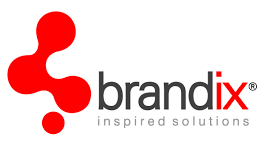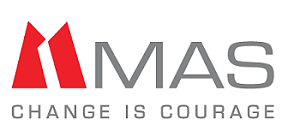Climate
At Victoria’s Secret & Co., we recognize that our response to climate change is not only a responsibility, but a critical factor in long-term business success as climate change introduces both acute risks and strategic opportunities across our value chain.
Climate-Related Risk
In 2024, we completed a climate risk and opportunity assessment aligned with the IFRS S2 framework. Using scenario analysis, we identified key vulnerabilities and began planning proactive measures. Read more about our climate risk assessment here.
As part of our climate risk assessment conducted aligned with the IFRS S2 framework, our most significant physical risks are in our supply chain, especially in two of our largest sourcing countries:
- In Vietnam, extreme rainfall events are projected to double by 2030 and triple by 2050, threatening production and transport. Rising heat stress may also reduce labor productivity.
- In Sri Lanka, river flooding is expected to increase sixfold by 2050, creating serious disruption risks for key suppliers.
Transition risks include the challenge of shifting to renewable energy in coal-reliant regions like Indonesia, and increasing regulatory pressures on materials and packaging.
At the same time, we see clear opportunities to advance progress by reducing emissions, enhancing supply chain stability, and supporting the communities most affected. We're especially focused on supporting women in our key sourcing regions, who are often the most vulnerable to climate disruption.
Climate considerations are embedded into our enterprise risk management program and sourcing decisions to ensure we are monitoring and addressing these issues to build a more resilient, forward-looking business.
Émissions de gaz à effet de serre
As part of managing our impacts on climate change, we measure and disclose our greenhouse gas emissions annually, and action on a roadmap to reduce emissions by transitioning to renewable energy, improving energy efficiency, adopting preferred materials, and engaging our suppliers on reduction strategies.
Our greenhouse gas emissions reduction target has been validated by Science-Based Targets Initiative (SBTi):
- Reduce absolute Scope 1 and 2 GHG emissions by 42 % by 2030 from a 2022 base year.
- Reduce absolute Scope 3 GHG emissions by 42 % by 2030 from a 2022 base year.
We continue to calculate our emissions in accordance with the Greenhouse Gas Protocol, with data collected internally and with our supply chain partners, analyzed by third-party experts, and with limited assurance by an external audit firm.
Read more about our Greenhouse Gas Emissions Data here.
Addressing Emissions in our Buildings
To improve the energy efficiency of our Columbus-based home office and distribution centers, we are converting all lighting to LED, have a white roof to reduce cooling load in our office facilities, updated to motion sensor lighting and installed energy and lighting controls. For these facilities, we source 100 percent carbon-free energy via Emissions- Free Energy Certificates from our provider, Energy Harbor.
In addition, our "Store of the Future" designed stores are equipped with LED lighting, more efficient HVAC systems, hand dryers and bottle fillers. As we continue transitioning our fleet of stores to this updated design, we will continue to evaluate average energy savings of this design compared to our conventional design.
As we remodel stores, we focus on reducing building material waste. Our updated design concept is open, reducing interior walls and, therefore, allowing us to use fewer metal studs and drywall. In addition, some of the walls and ceiling and building materials can be reused in other stores rather than going to the landfill.
Addressing Emissions in our Supply Chain
We regularly and proactively engage with our supply chain partners to understand their plans, progress and obstacles for reducing their emissions, and we support them in setting their own emission targets.
An important step in lowering the environmental impact of our products is collaborating
with supply chain partners to improve manufacturing operations. Toward this aim, we are taking collective action with the Apparel Impact Institute’s Carbon Leadership Program (CLP). This program assists our supply chain partners in measuring their emissions baseline, setting reduction targets, and creating a detailed roadmap for accomplishing those. Supporting our partners’ greenhouse gas reduction strategies is key to reducing the environmental footprint of our value chain. Read more here.
Transitioning to renewable energy is the most significant action we can take to reduce supply chain emissions. Many of our suppliers have already made meaningful progress-for instance, facilities representing about 40 % of our product and textile material business volume are now generating renewable energy on-site through rooftop solar installations. While this marks encouraging momentum, we recognize that fully transitioning all manufacturing energy to renewable sources will require continued support. As a first step, we have partnered with experts to provide our supply chain partners with region-specific training and resources. We are also developing detailed guidance on the systems and safeguards partners can implement to improve access to renewable energy.
In 2025, we are launching a sustainable supply chain finance program in partnership with HSBC to support our vendors. Vendors who meet specific social and environmental sustainability achievements can receive early payment on invoices. This unlocks access to capital at a competitive rate without additional borrowing.
Looking ahead, we remain focused on monitoring and addressing climate-related risks and advancing key climate roadmap initiatives to drive efficiency and resilience. These efforts position us to adapt to regulatory and market shifts while reinforcing the long-term strength of our business.

A Victoria's Secret & Co. partner for more than 25 years, Brandix is Sri Lanka's leading supplier in manufacturing and supply chain excellence. As one of the largest companies in each Sri Lankan community where its operations are located, Brandix recognizes its responsibility to more sustainable practices. Through its support of the Green Building Council's "Go Green" Campaign where it has manufacturing operations in Sri Lanka, Brandix is dedicated to raising awareness on the importance of environment protection and sustainable, practical solutions.
Consistent with this commitment to environmental sustainability, Brandix built the first LEED (Leadership in Energy and Environmental Design) Platinum-rated apparel factory under the Green Building Rating System of the U.S. Green Building Council (USGBC) and obtained LEED certification for three additional facilities. In addition, Brandix installed the largest rooftop solar plant in Sri Lanka as part of their efforts to reduce their carbon footprint.
By developing its own assessment tool - Eco Index, Brandix is able to quantify reductions in key environmental indicators for air, water and earth as they rollout initiatives to all of their locations in an effort to minimize CO2 emissions, energy and water consumption and solid waste disposal.

A VS&Co partner for more than 30 years, MAS Holdings (MAS) is the largest apparel and textile manufacturer in South Asia, and a company fundamentally built on the ethos of doing the right thing.
Today, the company's efforts to drive positive impact are outlined in the MAS Plan for Change. The Plan for Change is a commitment to inspire sustainable change within the MAS business, amongst its customers, people and communities, under three areas of focus: products, lives and planet. Our unique partnership with MAS Holdings has led to groundbreaking progress on the Forever Bra, which features our first bra pad designed for circularity. For over three decades, MAS has set out to reimagine the way the industry approaches manufacturing. At its core, MAS is committed to inspiring sustainable change in a way that works toward climate resilience, enriches lives and drives innovation that fuels positive change.
Transportation
The movement of freight around the world requires the use of fossil fuels. In order to minimize the impact of our supply chain logistics on the environment, Victoria's Secret & Co. is committed to:
- Utilizing the most efficient means of transportation that meets our delivery needs and schedules, including prioritizing boat freight which is used for the majority of our shipments
- Utilizing highly efficient trailer stacking techniques to optimize the use of trailer space and reduce the number of trucks and amount of energy required to transport our merchandise to our distribution centers
- Monitoring our transportation partners’ progress on achieving their emission reduction goals
Beauty Supply Chain
We have longstanding partnerships with our beauty vendors with many located on one campus, the Beauty Park, in New Albany, Ohio. Over 40 % of our beauty products and components are produced within the Beauty Park. As of today, the 200-acre site is the home of 14 inter-connected personal care and beauty product vendors, including:
- personal care and beauty product manufacturers
- packaging component manufacturers,
- product fillers
- packaging companies
By vertically integrating the entire personal care product supply chain from beginning to end, Victoria's Secret & Co. is able to shave both time (both production and transit time) as well as distance from our production process. Additionally, the reduction in the transit distance reduces the greenhouse gas emissions associated with the manufacture of our products.